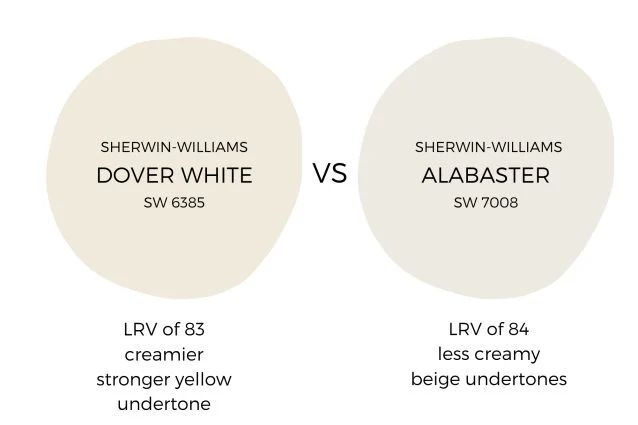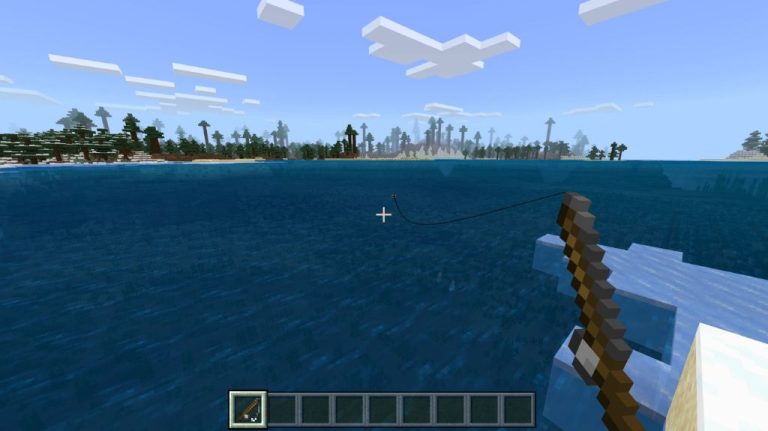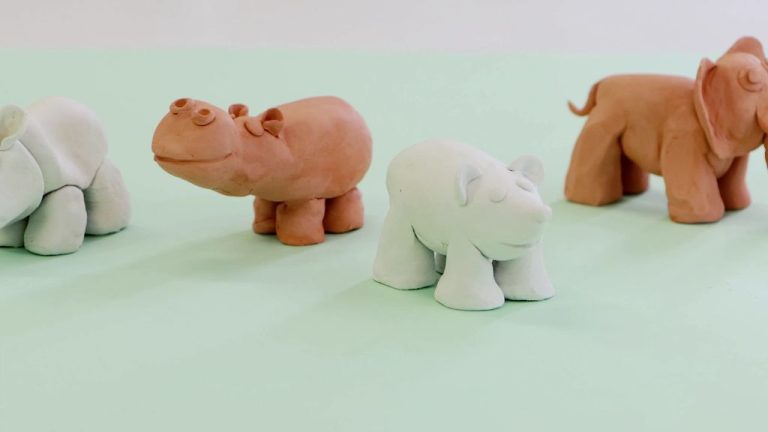Is Clay A Mineral Or Rock?
What is Clay?
Clay is a naturally occurring material composed primarily of fine-grained minerals, which is generally plastic at appropriate water contents and will harden when dried or fired. Clay is distinguished from other fine-grained soils by differences in size and mineralogy. According to the Britannica, clays are fine-grained earth materials that are plastic when wet and hard when fired, and are distinguished from other fine-grained soils by differences in size and mineralogy.
The defining mechanical property of clay is its plasticity when wet and its ability to harden when dried or fired. Clays are composed primarily of phyllosilicate minerals, which impart plasticity and hardenability. The most abundant clay minerals are kaolinite, montmorillonite-smectite, illite, and chlorite. Clays form by the chemical weathering of rocks over long periods of time by the action of water and gases. They may also form through hydrothermal alteration and sedimentation in bodies of water.
The small particle size, plasticity, and abundance make clays an important material for pottery, construction, engineering, and other applications. However, the small particle size also accounts for most of the difficulties in working with clay on a large scale. Clays exhibit a range of colors and are grouped into three main classes – kaolins, ball clays, and common clays – based on their mineral content.
Clay Formation
Clay is formed from the weathering and decomposition of rocks like feldspar through a process called chemical weathering. This process breaks down the crystalline structure of the rocks over time through exposure to air, water, acids, and heat. As feldspar weathers, it releases silica and alumina that combine with water to form kaolinite, the main mineral component of clay. Kaolinite has a crystalline sheet structure which gives clay its plasticity and ability to harden when fired.
The type of clay that forms depends on factors like the composition of the original rock, climate, topography and drainage. In wet tropical environments, intense rainfall rapidly leaches away silica and alkalis, forming kaolinite-rich clay. In drier climates, clays tend to retain more silica and alkalis. The clay deposits found across various geological formations and soil profiles are a result of these weathering processes acting on rocks over geologic timescales.
In addition to chemical weathering, physical weathering mechanisms like cycles of wetting/drying, freezing/thawing, and erosion also break down rocks into smaller clay mineral particles that accumulate through transportation by water, ice, and wind. Glaciation and rivers carry these clay sediments which eventually settle and deposit in low-lying areas like lakes, deltas, floodplains and ocean basins. Over long periods of geologic time, these deposited clay layers are consolidated to form shale, claystone and mudstone sedimentary rocks.
Overall, the formation of clays is a complex geologic process driven by the chemical breakdown and physical erosion of rocks combined with the transportation and deposition of weathering products over time. These mechanisms produce the clay deposits and sedimentary clay rocks found across various geological formations and soil types today.
Clay Composition
The chemical composition of clay is complex and variable. Clay minerals are hydrous aluminium phyllosilicates that make up the majority of clay’s composition.
The most common clay minerals include kaolinite, montmorillonite-smectite, illite, and chlorite. Kaolinite is made up of silica tetrahedron and alumina octahedron sheets in a 1:1 ratio. Montmorillonite consists of 2 silica tetrahedron sheets sandwiching an alumina octahedron sheet in a 2:1 ratio. Illite also has a 2:1 ratio of silica to alumina but contains potassium as an interlayer cation. Chlorite differs with a 2:2 ratio of silica to alumina (Sturz, 1995).
Other elements commonly found in clays include iron, magnesium, calcium, sodium and potassium. The specific mineral composition determines the properties and uses of the clay (Kumari, 2021). Trace amounts of titanium, manganese and other elements may also be present.
Clay vs Mineral
While clays share some similarities with minerals, there are also key differences that distinguish the two. Like minerals, clays are inorganic, naturally occurring substances with a crystalline structure. However, unlike most minerals, clays are composed of tiny, fine-grained particles rather than large crystals. The particle size of clays is generally less than 4 micrometers in diameter, allowing them to feel smooth and powdery.
Clays do meet the definition of a mineral in many regards. They have an ordered internal structure, are formed by geologic processes, and have a specific chemical composition. The clay family includes well-known minerals like kaolinite, montmorillonite, and illite. However, clays also contain other non-crystalline substances and impurities that set them apart from pure mineral forms. Their composition is more variable than classic minerals.
Overall, clays straddle the line between minerals and rocks. They are composed of minerals but usually contain other elements as well. Their small particle size and plasticity when mixed with water also distinguish them from most rock-forming minerals. While clays share some mineral traits, they have their own distinct properties that set them apart as a unique geologic material.
Clay vs Rock
Clays and rocks have some similarities, but there are important differences that distinguish clays from rocks (Missouri Department of Natural Resources). While clays are made up of small mineral particles and may harden over time, they do not meet the full definition of a rock.
Rocks are made up of one or more minerals and formed through geological processes (crystallization, precipitation, compaction, or cementation). Rocks are naturally occurring solid formations with a defined chemical composition and crystal structure. Clays, on the other hand, do not have a specific chemical composition or crystal structure.
Clays are considered unconsolidated sedimentary materials, not rocks. While clays may harden over time through compaction or cementation, this process forms rock-like materials such as shales and mudstones, not true rocks. Clays can also be a component within sedimentary rocks. However, on their own, clays are classified as sediments, not rocks.
Clay deposits are found throughout the world, typically in certain locations based on how the clay formed.
Clay Deposits
Common locations for clay deposits include:
- Along river banks and floodplains where alluvial clay has settled (https://ancientpottery.how/where-is-clay-found/)
- In lacustrine deposits or dried lake beds where clay has accumulated over time
- In areas with a lot of volcanic ash, as the ash weathers into kaolinite clay
- In tropical rainforest environments where heavy rainfall has weathered rock into clay
- In places like North Dakota and Montana where bentonite clay formed from altering volcanic ash
The three most common types of clay deposits are:
- Residual clay formed from in-place weathering of rock
- Sedimentary clay formed by erosion and transported by water, wind or ice before being deposited
- Shale clay formed from consolidated mud and clay sediments
The specific minerals and composition of a clay deposit depends on the original source material and how the clay was transported and deposited over geological time.
Uses of Clay
Clay has a wide variety of uses across many industries including construction, art, agriculture, and more. Some of the most common uses of clay include:
- Construction – Clay is used to make bricks, cement, and mortar. It is molded into bricks to be used for building foundations, walls, floors, ovens, and chimneys. Clay is an essential ingredient in Portland cement. It is also used to make floor and wall tiles for homes.
- Pottery – Clay is the primary material used to make pottery items like vases, plates, bowls, and tiles. Potters mold clay into shapes and fire it in a kiln to harden it.
- Sculptures – Sculptors shape clay into busts, figurines, and other artwork. The sculptures are then fired in a kiln or left as unhardened clay.
- Agriculture – Clay is added to soil to improve drainage and help retain moisture and nutrients. Kaolin clay is used in skincare products and as an insect repellent. Bentonite clay is given to animals like cats and dogs to help with digestion.
- Medicine – Clay has been used medicinally for centuries to treat wounds, digestive issues, and skin conditions. Clays like kaolin and bentonite are key ingredients in some over-the-counter medicines.
- Cosmetics – Clay is an ingredient in many cosmetic products like mud masks, soaps, and skin creams. It helps cleanse, exfoliate, and nourish the skin.
- Paper – Kaolin clay is used to coat paper products giving them a glossy sheen. It improves the quality and printability of the paper.
Clay is an abundant, versatile material that has been used across civilizations for millennia. Its unique properties make it suitable for a wide array of applications even today.
Clay Extraction
Clay is extracted through surface mining operations. The mining process starts with exploration to find suitable clay deposits. Then the area is evaluated to determine the optimal mining method based on factors like the clay’s depth and location. Common techniques include open-pit mining, strip mining, and dredging from riverbeds or lakes.
Once extracted, the clay goes through various processing depending on its intended use. Some basic steps include crushing, grinding, separating unwanted materials, and drying. The clay may also undergo bleaching, mixing with other materials, and reforming into custom shapes and sizes. For example, pottery clay is refined, mixed with water, and formed into ceramic items. Industrial clays are processed into powder form for manufacturing applications like cement, paint, pharmaceuticals, and more.
Sources:
https://www.youtube.com/watch?v=4RzNmESuYuM
https://creativemarket.com/product/58445187-blue-clay-mining-process-in-a-quarry.-Clay-mining.-excavator-mines-blue-clay-and-loads-into-green-truck.-%D1%8Edrone-photo.-aerial-vi
Environmental Impacts
Clay mining can have significant impacts on the environment. The extraction process often requires clearing trees and vegetation, removing topsoil, and digging large pits in the earth. This major disturbance of the landscape can lead to soil erosion, changes in land use, habitat destruction, and impacts on local wildlife populations (Ranasinghe, 1995 https://idl-bnc-idrc.dspacedirect.org/bitstream/handle/10625/51066/IDL-51066.pdf?sequence=1).
The pits and quarries where clay is mined can fill with water and create stagnant pools that allow disease-carrying insects like mosquitoes to breed. Mining operations often require pumping of water from quarries which can deplete groundwater resources. The fine particulates produced from clay extraction can also lead to air pollution and respiratory issues for nearby communities (Aneesh & Suresh, n.d. https://www.semanticscholar.org/paper/Environmental-impacts-of-clay-mining-in-the-of-A-Aneesh-Suresh/1ef2eaa40963f70d2e7336b0cb4b03ea99afff52).
Careful environmental impact assessments, land reclamation efforts, and regulation of mining practices can help mitigate some of these effects. However, clay mining inevitably represents a major disturbance of the environment that can have long-lasting consequences.
Conclusion
In summary, clay meets the definition of a mineral but not a rock. Clay is composed primarily of fine-grained minerals such as kaolinite, smectite, illite, and chlorite. The small size and platy shape of clay minerals give clay its unique properties. While clay contains minerals, it does not have the larger crystal structure that defines rocks. Clay also lacks the coherence and consolidation that characterize rocks. So in conclusion, clay is considered a mineraloid and a sedimentary deposit, but not a true mineral or rock.
The key points are:
- Clay is composed of clay minerals such as kaolinite, smectite, illite, and chlorite
- Clay minerals are small in size and have a platy, sheet-like structure
- Clay lacks the larger crystal structure and coherence of rocks
- Clay meets the definition of a mineraloid or sedimentary deposit
- Clay does not meet the full definition of a rock or true mineral
So while clay has some characteristics of a mineral, it lacks others that would qualify it as a true mineral. And clay shares some properties with rocks but lacks the consolidation and coherence to be considered a rock. Therefore, clay is best categorized as a mineraloid sedimentary deposit.




